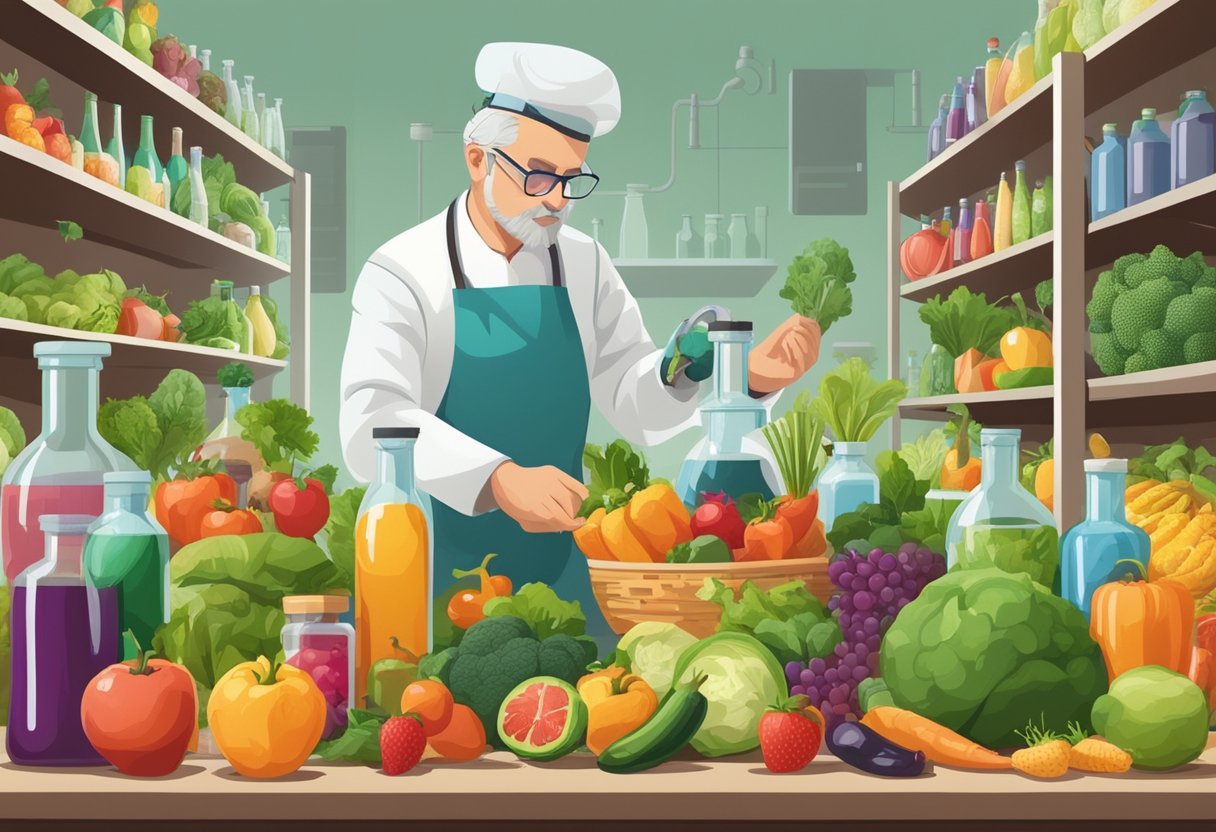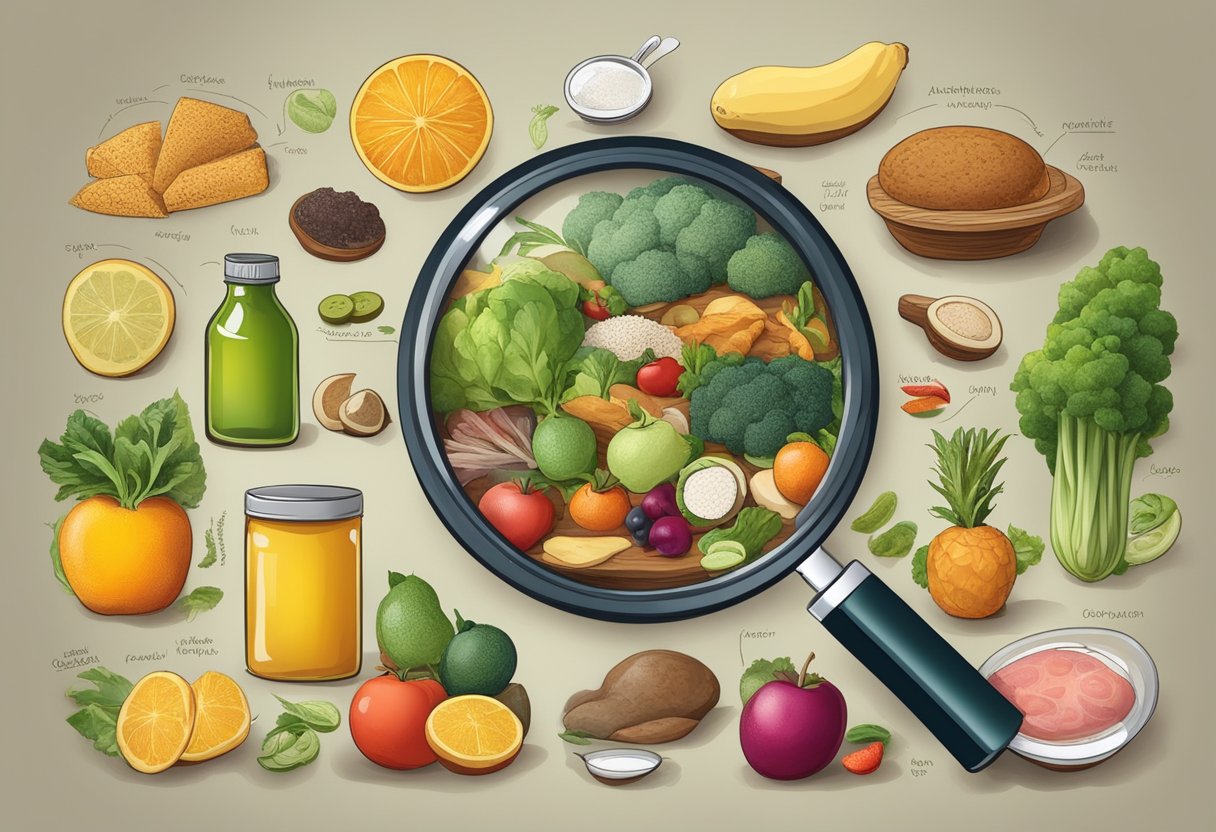Understanding Food Safety and Toxicology for Healthier Diets

Food safety and toxicology are crucial aspects of maintaining a healthy diet, yet they often go unnoticed in our daily routines. Understanding the impact of food toxins on human health can help individuals make informed choices about what they consume. Food toxicology studies how various substances in food can cause harmful effects, while food safety focuses on preventing these dangers.
Research has shown that diet plays a significant role in health outcomes. Contaminants in food, whether they are natural toxins or man-made chemicals, can have serious health implications if not properly managed. Assessing the risks associated with different foods is essential for ensuring that what we eat supports our well-being. Collaboration among health professionals is key to developing effective strategies for food safety.
New research in food safety continues to uncover ways to protect public health. The growing field of nutritional toxicology explores how diet can influence health and help mitigate risks. By staying informed about these developments, both consumers and professionals can contribute to a safer food environment.
Key Takeaways
- Food toxicology reveals how substances in food can harm health.
- Risk assessment is critical for maintaining food safety.
- Emerging research helps develop strategies to improve food safety and health outcomes.
Fundamentals of Food Toxicology
Food toxicology explores harmful substances in food, their effects on health, and how these substances interact with the body. Key areas include contaminants, dose and exposure, natural toxins, and mycotoxins, such as aflatoxins.
Understanding Contaminants and Food Toxicants
Contaminants and food toxicants can enter food supplies through various means. Contaminants may include chemicals from industrial processes, pesticides, or packaging materials. Food toxicants refer to harmful substances that may naturally occur in food or be introduced during processing.
Chemical contaminants can cause adverse health effects, including poisoning or long-term diseases. Regular monitoring and detection methods are crucial to keeping contaminants at safe levels. Authorities set stringent regulations to manage the presence of these toxicants in food.
The Role of Dose and Exposure in Toxicology
The dose and exposure to a toxicant determine its potential health risks. Toxicology studies illustrate that the impact of a substance depends on the amount consumed and the duration of exposure.
Even essential nutrients can become toxic at high doses. The concept of “the dose makes the poison” is foundational in toxicology. Regulatory bodies establish maximum limits for various contaminants to ensure food safety. These limits help to minimize the risks of long-term exposure to harmful substances in the diet.
Natural Toxins and Mycotoxins in Food
Natural toxins and mycotoxins pose significant risks because they occur in food naturally. Mycotoxins are toxic compounds produced by molds, with aflatoxins being among the most harmful. Aflatoxin contamination is a major concern in crops like peanuts, corn, and tree nuts.
Mycotoxin contamination can lead to severe health problems, including liver damage and cancer. To manage these risks, strict regulations are in place to control and test for mycotoxins in food. Understanding the conditions that promote mold growth and mycotoxin production helps in minimizing these dangers in the food supply.
Food Safety and Risk Management

Managing food safety involves evaluating potential health risks, implementing strategies to reduce contamination, and involving healthcare professionals to prevent foodborne illnesses.
Assessing Health Risks and Regulation
Food safety risks are evaluated through both scientific testing and regulatory measures. Authorities like the FDA and USDA assess the presence of harmful substances such as pesticides, heavy metals, and microbial contaminants. These agencies set limits on these substances and conduct regular inspections to enforce compliance. The Pure Food and Drugs Act of 1906 was a significant milestone, giving the government the power to regulate food safety and ensure the public’s health.
Risk assessment in food safety involves hazard identification, dose-response assessment, exposure assessment, and risk characterization. These steps help determine the likelihood and severity of adverse health effects from unsafe foods. Regulatory toxicology plays a key role in these assessments, contributing data that inform food policy decisions and safety standards.
Strategies for Reducing Contamination
Reducing contamination involves implementing various strategies throughout the food supply chain, from farming to consumption. Good Agricultural Practices (GAPs) and Good Manufacturing Practices (GMPs) are essential for minimizing risks. These practices focus on personal and environmental hygiene, proper handling and storage of food, as well as regular testing for contaminants.
Packaging also plays a crucial role in maintaining food safety. Using materials that prevent contamination and preserve the integrity of food items is critical. Labels on packaging provide important information on safe handling and storage, which helps consumers make informed decisions. Public awareness campaigns on safe food handling practices and hygiene can significantly reduce the risk of foodborne illnesses.
The Role of Healthcare Professionals in Prevention
Healthcare professionals are instrumental in preventing foodborne illnesses by educating the public on safe food practices and recognizing early symptoms of foodborne diseases. They provide crucial information on how to avoid risky behaviors, such as consuming undercooked or improperly stored food.
Healthcare providers also report cases of foodborne illnesses to public health authorities. This data helps track outbreaks and identify common sources of contamination. In cases of severe outbreaks, healthcare professionals work with regulatory bodies to implement control measures and prevent further spread.
Collaboration between healthcare professionals, regulatory agencies, and the food industry is vital for maintaining food safety standards and protecting public health.
Nutritional Perspectives in Food Toxicology
Food toxicology examines how toxins affect the body and evaluates the role of nutrients in mitigating these effects. The relationship between nutrition and toxicology is crucial in ensuring a safe diet and maintaining overall health.
Importance of Nutrients and Potential Hazards
Nutrients play a significant role in health, impacting how the body processes and detoxifies harmful substances. For example, adequate iodine levels are essential for thyroid function, while a deficiency can increase sensitivity to toxic substances.
Proteins are vital for repairing tissues and producing enzymes that detoxify harmful chemicals. A protein-deficient diet can impair the body’s ability to fend off toxins, making it more susceptible to damage from environmental and food-borne contaminants.
Food processing can introduce or increase the presence of contaminants. For example, mycotoxins, products of mold, pose a risk when conditions during processing are not properly controlled, highlighting the importance of monitoring and regulation in food processing.
Maintaining a balanced diet rich in nutritious foods such as fruits, vegetables, and whole grains can help mitigate the impact of toxins. By incorporating a variety of nutrients, the diet supports the body’s detoxification systems and overall health, minimizing the risks associated with exposure to various food sources.
Emerging Research and Future Directions
Current studies in food safety and toxicology reveal significant advancements and innovative approaches. These developments aim to better detect contaminants and improve safety measures in everyday diets.
Advancements in Detection and Analysis
Recent progress in detection methods has enhanced the ability to identify foodborne pathogens and contaminants. Sophisticated technologies like mass spectrometry and genomic sequencing offer more precise analysis of food samples. These techniques enable quicker identification and tracking of contamination sources, helping prevent disease outbreaks.
Epidemiological studies use mathematical models to predict and manage food safety risks. For instance, improved surveillance systems now allow for real-time monitoring of food production processes. This supports rapid response to potential hazards, reducing the impact of foodborne illnesses.
To further this research, platforms such as the 3rd International Electronic Conference on Foods provide a collaborative space for experts to share findings and strategies. The latest updates are often published in reputable journals like the Foods journal, ensuring wide dissemination of critical information.
Novel Approaches to Toxicology and Food Safety
Innovative methods in toxicology focus on evaluating the long-term effects of food additives and contaminants. One area of interest is the use of cannabis sativa extracts, which show promise in reducing certain foodborne pathogens.
Research is also delving into the safety assessment of novel compounds introduced in food processing. This includes studying their potential toxicological effects through advanced in vitro and in vivo models. These approaches help to determine safe levels of new additives and ensure they do not pose risks to public health.
Collaborative efforts between food safety authorities and researchers are key to developing these new practices. Conferences and publications play a major role in sharing knowledge and driving the field forward. The continued exchange of research findings is crucial in shaping the future of food safety and toxicology.








